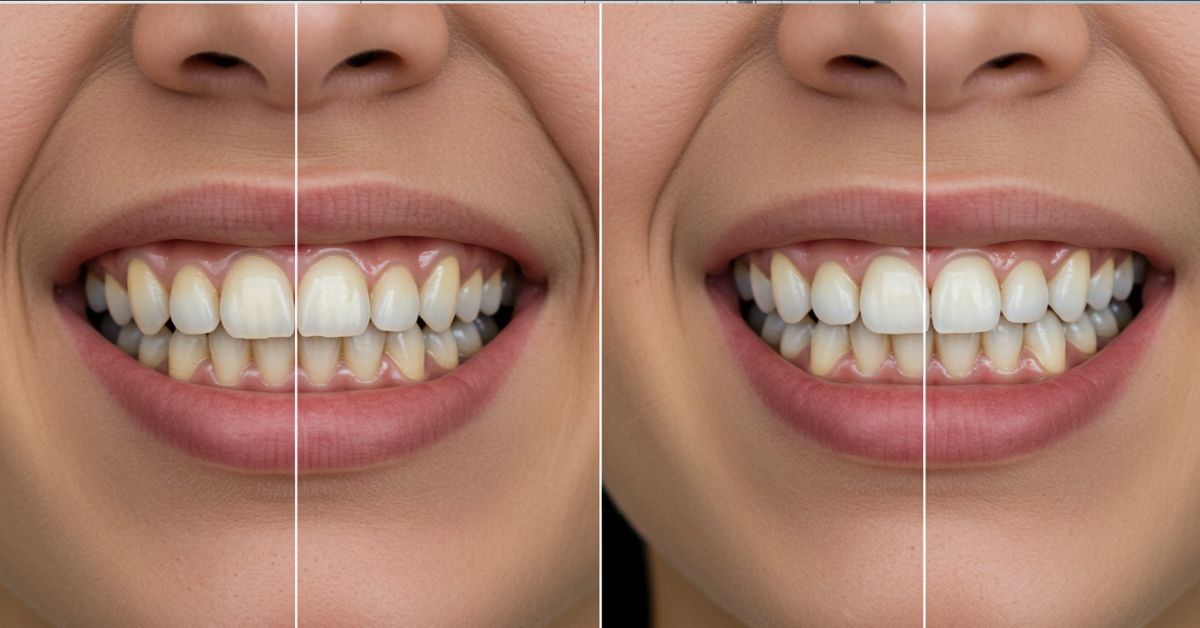When you think about improving your smile, the first thing that likely comes to mind is braces. The decision to get braces is significant—it’s a commitment that involves both time and money. But the result is often life-changing. The “braces before and after” transformation is not just about straightening your teeth, but also about boosting your confidence and improving your overall dental health.
In this article, we will delve into the transformative power of braces, highlighting what you can expect before, during, and after treatment. We will also explore the various types of braces available, how they work, and provide a side-by-side comparison to help you make an informed decision. So, whether you’re considering braces for yourself or a family member, this guide is here to provide all the insights you need.
Understanding the Braces Process
Before Braces: What to Expect
The decision to get braces usually stems from a desire to improve the alignment of your teeth. This can include fixing issues like overcrowding, crooked teeth, overbites, underbites, and gaps between teeth. Before getting braces, you will undergo a consultation with an orthodontist. Here’s what happens during the initial phase:
- Consultation and Examination: The orthodontist will assess your teeth, jaw, and overall dental health. This may include X-rays, photographs, and digital scans.
- Treatment Plan: Based on the examination, the orthodontist will create a personalized treatment plan, outlining the type of braces that will work best for your specific needs.
- Preparing Your Teeth: Before applying braces, your orthodontist may recommend cleaning your teeth thoroughly. In some cases, tooth extraction may be necessary if there’s not enough room for your teeth to align properly.
- Fitting the Braces: Once you’re ready to go, the orthodontist will place the braces on your teeth. This typically involves bonding brackets to your teeth and threading a wire through them. Adjustments will be made to ensure the braces are securely placed.
During Treatment: The Braces Journey
The braces journey typically spans several months to a few years, depending on your dental issues and the type of braces you choose. The timeline for treatment can vary based on:
- Age: Younger patients often have faster results due to the flexibility of their bones.
- Severity of the Condition: Mild alignment issues may take less time than more severe cases.
- Type of Braces: Some types of braces, such as clear aligners, might take longer to achieve results compared to traditional metal braces.
During treatment, you will need to visit your orthodontist periodically for adjustments. These appointments are crucial to ensure your braces are working as expected and that progress is on track.
Also read this post: Your Complete Guide to Comfort and Clarity with the Best Daily Contacts for Dry Eyes
Things to Keep in Mind During Treatment:
- Diet Restrictions: Certain foods (hard, sticky, or chewy foods) should be avoided to prevent damage to your braces.
- Oral Hygiene: Maintaining excellent oral hygiene is essential while wearing braces. You’ll need to brush your teeth more carefully, ensuring that food particles and plaque don’t get stuck in your braces.
After Braces: The Life-Changing Transformation
The moment you finally get your braces off is undoubtedly exciting! After months (or years) of waiting, you’ll be able to see the transformation that has occurred. However, the “after” phase doesn’t end there—there are still important steps to ensure that your results last a lifetime.
- Retainers: After braces are removed, your orthodontist will fit you with a retainer. Retainers help maintain the alignment of your teeth, preventing them from shifting back to their original positions. You will typically wear a retainer for a few months to a few years, depending on your specific case.
- Post-Treatment Care: It’s essential to maintain your dental care routine even after the braces come off. This includes regular check-ups with your dentist and orthodontist to ensure your teeth remain aligned and healthy.
- Results: Once you’re finished with your treatment, you’ll enjoy a beautiful, straight smile. This can improve not only your appearance but also your confidence and self-esteem. Additionally, properly aligned teeth can lead to better oral health by making it easier to clean your teeth and gums.
Types of Braces: Which One is Right for You?
There are several types of braces available today, each offering different advantages. The type you choose will depend on your specific dental needs, lifestyle, and budget. Below, we compare the most common types of braces:
| Type of Braces | Description | Pros | Cons | Ideal for |
| Traditional Metal Braces | Brackets and wires are attached to your teeth. Adjustments are made over time. | Durable, affordable, highly effective | Noticeable, may cause discomfort | Individuals with severe alignment issues |
| Ceramic Braces | Similar to metal braces but made from clear or tooth-colored material. | Less visible than metal braces | More expensive, can stain over time | People who want a discreet option |
| Lingual Braces | Brackets are placed on the back of your teeth. | Hidden from view, effective | Difficult to clean, can be uncomfortable | Those who prefer invisible braces |
| Clear Aligners (e.g., Invisalign) | Custom-made clear trays that gradually shift teeth. | Virtually invisible, removable for eating and cleaning | Can be more expensive, requires discipline in wearing them | Individuals with mild to moderate alignment issues |
| Self-Ligating Braces | Similar to traditional braces but use a sliding mechanism to hold the wire in place. | Fewer adjustments needed, less friction | Can be more expensive | People who want faster treatment with fewer appointments |
Braces Before and After: The Visual Transformation
One of the most compelling aspects of getting braces is seeing the transformation of your smile. The difference between “braces before and after” can be truly astonishing. Before treatment, you may have crooked, misaligned, or crowded teeth that affect your appearance and possibly your self-esteem. After treatment, you’ll notice a straighter, more harmonious smile that enhances your facial features.
While every case is different, common improvements include:
- Straighter teeth that align with your facial structure.
- Reduced gaps between teeth.
- Better bite alignment, including overbite and underbite correction.
- Increased confidence due to a more appealing smile.
How Long Will It Take?
The length of time needed to complete your treatment depends on the severity of the misalignment and the type of braces used. On average, treatment can take anywhere from 12 months to 36 months, with mild cases often resolving in the shorter time frame.
Common Misconceptions About Braces
There are many myths about braces that can prevent people from seeking treatment. Let’s debunk some of the most common misconceptions:
- Braces Are Only for Kids: While braces are often associated with teenagers, adults can also benefit from braces. In fact, a growing number of adults are choosing orthodontic treatment to correct long-standing dental issues.
- Braces Are Extremely Painful: While there can be some discomfort after adjustments, modern braces are designed to minimize pain. Over-the-counter pain relievers can help ease any discomfort.
- Braces Will Affect Your Speech Permanently: While you may experience slight changes in speech when you first get your braces, this is temporary. Your mouth will adjust over time, and you’ll speak just like before.
- Braces Require Extensive Maintenance: Braces do require some effort to maintain, but the process is straightforward. Brushing after meals, avoiding certain foods, and wearing a retainer are simple steps that ensure your braces work effectively.
Also read this post: Your Resource for Tasty and Nutritious Healthy Snacks
The Psychological Impact of Braces
For many individuals, the “braces before and after” transformation isn’t just about physical appearance. It’s also about improving self-esteem and mental well-being. The decision to undergo orthodontic treatment can be life-changing, boosting confidence in personal and professional interactions. It’s common for people to feel more outgoing and comfortable with their new smile, leading to a positive ripple effect in other areas of life.
Conclusion
Braces have long been a proven solution for achieving a straighter, healthier smile. The journey from “braces before and after” can be transformative, not only enhancing your appearance but also improving your dental health. With so many options available, there’s no one-size-fits-all solution, but working with an experienced orthodontist will ensure that you find the right treatment for your unique needs.
Whether you’re seeking traditional metal braces, discreet ceramic options, or clear aligners, the key is to commit to the process and follow through with your orthodontist’s guidance. In the end, the result will be well worth it—a smile that lights up your face and boosts your confidence for years to come.







